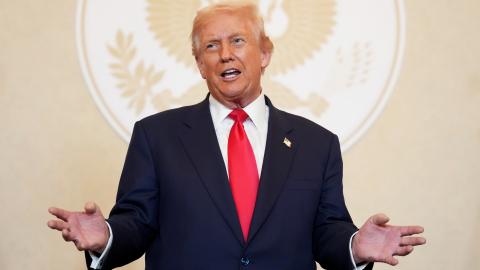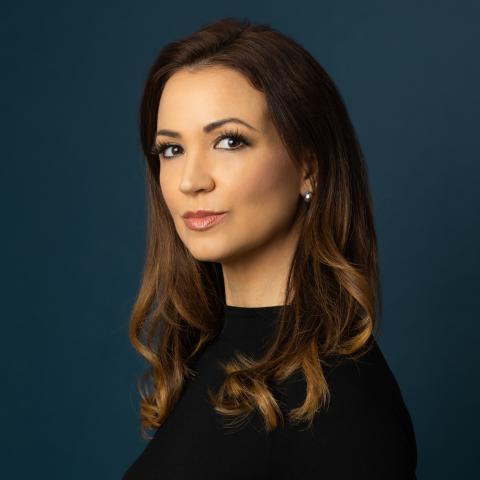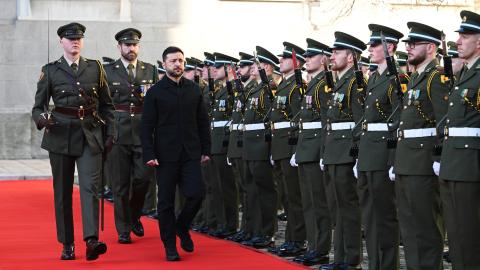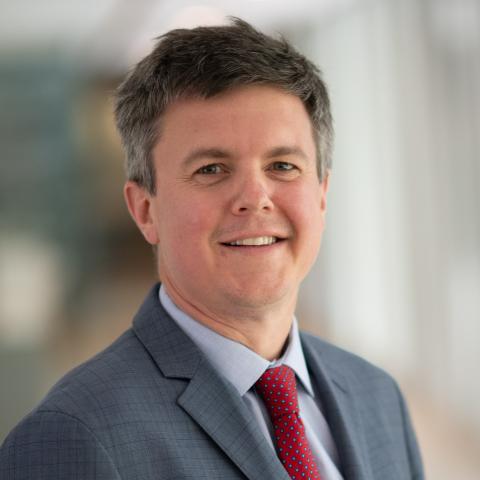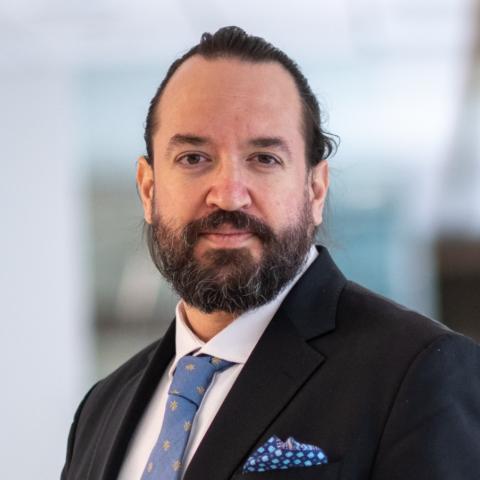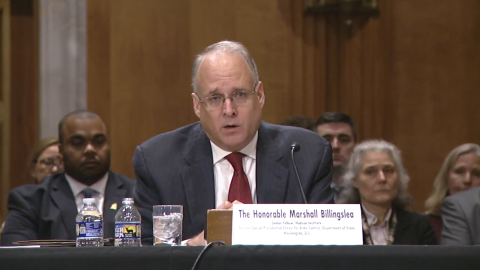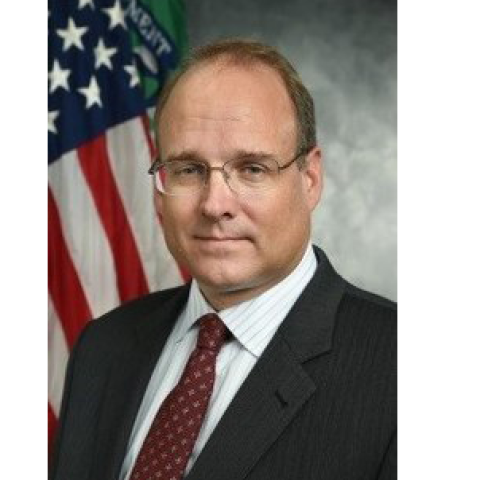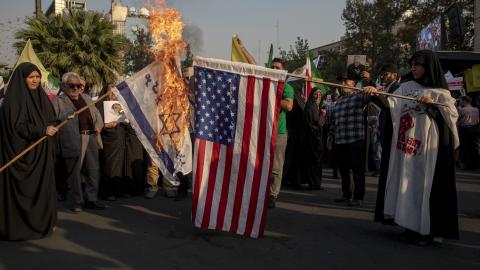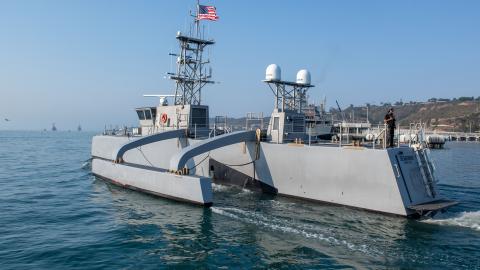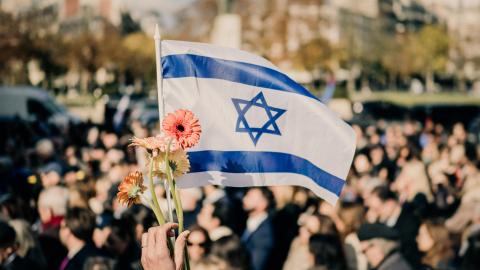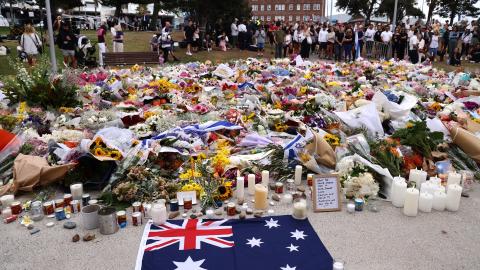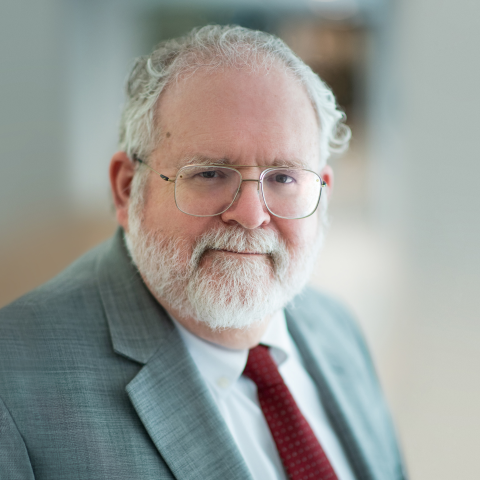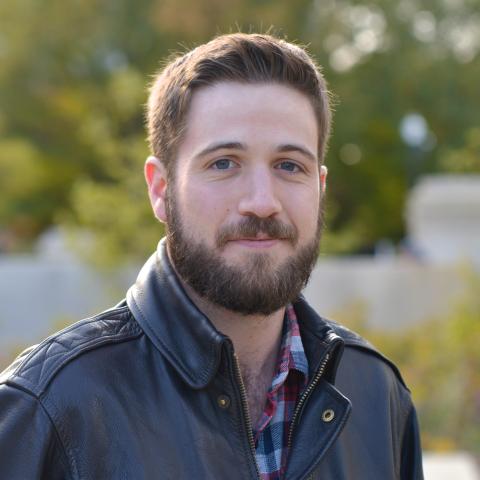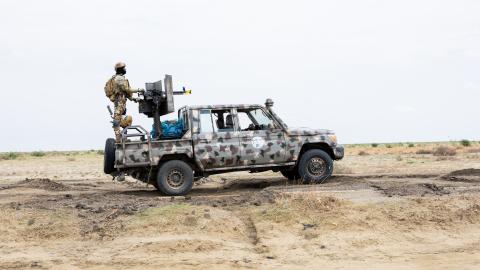In November 2024, Nigerian military officials declared with some alarm that a “new” terrorist group known as “Lakurawa” was operating in rural corners of the country’s northwest. Several months later, in January 2025, the Nigerian government took the step to legally designate Lakurawa as terrorists. Soon after, the military junta in Niger alleged (without evidence) that the group had been sponsored by Nigeria in the latest iteration of a now two-year-long spat between the neighboring countries.
The emergence of a supposedly new militant group on Nigerian soil is particularly worrying against a backdrop of jihadist violence once again escalating in the country’s northeast and spreading to other regions of Nigeria. Yet the identity of these militants has been difficult to parse, with significantly divergent views being presented in different media reports, official statements, and publications by analysts. As with many things related to jihadism in Nigeria, there is much analysis that relies on limited hard data, resulting in significant speculation.
Having researched the Lakurawa phenomenon before it made international headlines, we aim to offer some essential context as well as a discussion of the evidence in support of two competing theories regarding Lakurawa’s affiliation. We propose that Lakurawa, while it initially applied to a specific group of jihadist fighters recruited from the Sahel-Saharian zone to fight bandits in Sokoto state, has now become a generic exo-descriptor which civilians in northern Nigeria (and, by extension, many officials, journalists, and analysts) use to describe a variety of jihadist militants originating from the Sahel-Saharian zone (and their associates) now in different parts of Northwest Nigeria. Thus, our evidence suggests that the term is being used to describe both members of the Islamic State Sahel Province (ISSP, formerly known as the Islamic State in Greater Sahara or ISGS), who are particularly active in Sokoto state and parts of neighboring Kebbi state, as well as members of Jama’at Nasr al-Islam wal-Muslimeen (JNIM, the al-Qaeda-affiliated Sahelian network) that are active along the Benin-Nigeria border. Each group’s area of operations within Nigeria is somewhat vague at this stage, which leads to confusion in parts of the northwest where they might overlap, a confusion which benefits the jihadists. The media’s fixation on Lakurawa seems to have reinforced perceptions within the northwest that they are a single group and the principal cause of regional instability, resulting in local media and analysts likely misattributing bandit attacks to Lakurawa on several occasions since late last year, as a forthcoming study by the first author shows.
Much of the analysis of Lakurawa published to date has utilized media reports and statements from officials, which are often conflicting and have a limited empirical basis. We rely instead primarily on interviews with key sources, including jihadist defectors in Nigeria and members of communities in the northwest who have interacted with Lakurawa, in some cases quite extensively over the course of several years. These interviews are drawn from different research projects that the authors have been conducting examining the history and evolution of the Boko Haram conflict and its intersection with other forms of insecurity in Nigeria. Our methodology is imperfect, but we nonetheless believe that it can help shed light on aspects of the “Lakurawa” phenomenon that have heretofore been a source of confusion.
A brief history of Lakurawa from 2017
Traditional authorities in the northernmost parts of Sokoto state first invited the militants to offer protection to their communities in late 2017. Gudu and Tangaza LGAs of the state, which border Niger Republic, were suffering at the time an onslaught of bandits from Zamfara, who themselves were relocating to neighboring Sokoto in response to military operations against their bases. As our colleague Murtala Ahmed Rufa’i has detailed, with the Nigerian government unable to provide security to such isolated rural communities afflicted by banditry, the traditional rulers of Balle district in Gudu and Gongono district in Tangaza met with a local chairman of Miyetti Allah, a prominent pastoralist civil society group, and decided to use the latter’s connections to the Malian pastoralists to hire armed fighters from the latter to protect their communities. As explained further below, the militants who eventually came to Sokoto were a mixture of Malians and Nigeriens, however, with the latter belonging principally to the Tolobe (a Fulani clan with historical ties to Sokoto).
The district heads might not have known that these militants had some association with jihadist groups operating in Niger Republic and Mali. The militants were initially known as Lakuruje, a Hausa-ization of the French word for “recruits,” likely in reference to their being recruited from Mali and Niger to combat banditry in Nigeria. During the 1990s and 2000s, various ethnic militias had formed in Niger, including among the Tolobe, initially to fight against Touareg rebels, with some of these militias then conducting anti-banditry activities. From 2012 onward, some of these Tolobe joined the jihadist group Movement for Oneness and Jihad in West Africa (known by its French acronym, MUJAO), a splinter group of al-Qaeda in the Islamic Maghreb that eventually joined JNIM in 2017. As explained below, some of these Tolobe affiliated with MUJAO likely constituted at least a share of the early membership of Lakuruje (who soon became known instead as Lakurawa, the exact etymology of which is unclear).
The militants, for their part, invoked their kinship and historical connections to the region, including their clan’s role in the jihad led in the region by Usman Danfodio in the early 19th century. (Gudu holds significance in the history of the Sokoto Caliphate; while members of Lakurawa have attempted to exploit that history, religious leaders in Sokoto today have pushed back against the militants’ appropriation of this legacy.) In the first few months of operations in Sokoto in 2018, the militants were welcomed in the communities because of their efforts to rescue victims under bandit attack. By the end of 2018, however, the Lakurawa had shifted from merely fighting bandits and were engaging in an aggressive campaign of sharia enforcement in local villages. As residents of those communities recalled, the Lakurawa “preached in public squares, intimidated clerics, and flogged villagers for playing music or dancing,” while also “follow[ing] informal, roving Fulani settlements (ruga), forcing the herders to pay levies on their cattle under the guise of zakat(religiously obligatory almsgiving) and chastising them for ‘un-Islamic’ activities.”
This led some community members to seek help from the Sokoto state government in expelling the group. A set of indirect negotiations ensued between the government and the armed group via local traditional rulers. The challenge, however, was that Lakurawa at this stage was not a homogenous group: According to participants in the dialogue, what they describe as the leadership of the group was Malian. These Malians introduced themselves as associates of Amadou Koufa (founder of the Katiba Macina, which merged with other jihadist groups to form JNIM in March 2017). However, a number of the militants among these Lakurawa who were Fulani from Niger specifically the aforementioned members of the Tolobe clan (Unfortunately, our sources were not specific as to the exact number of fighters in Lakurawa at this time and the relative proportion of Malians and Nigeriens). There appear to have been some divisions or between the Malian and Nigeriens at this time, even as, in the eyes of the local Sokoto communities, they were all part of the same Lakurawa: 2017-2018 was a time of flux for jihadists in the Sahel, with some Fulani members of the al-Qaeda-linked groups such as Katiba Macina/al Mourabitoune beginning to defect to the nascent Islamic State Sahel group (which had only formed in 2015).
While the Malian members of Lakurawa apparently agreed to leave Sokoto at the request of the local communities, the Nigerien members of the group were reportedly less amenable to dialogue and insisted on maintaining their presence in Nigeria. They subsequently clashed with Nigerian troops, who chased them across the border into Niger in late 2018. The Nigerien militants may have made a greater effort to stay in Sokoto in part due to military pressure that the Islamic State Sahel group was facing in Mali at the time, which would have created pressure for them to establish new bases deeper southwards in Nigeria.
In 2019, the Nigerien members of Lakurawa returned and killed the district head of Balle in a dispute over 63 million Naira (equivalent to approximately 210,00 USD at the time) in cash that they had left for safekeeping with his son. The killing, and repeated incursions into Tangaza, Gudu, and the neighboring LGA of Illela thereafter, likely reinforced in the eyes of the local population that Lakurawa were not going to disappear. Many of these communities appear to have concluded that their presence was at least preferable to that of the bandits, and thus they did not raise the alarm about Lakurawa’s presence, meaning there was hardly any publicly available reporting after 2018 that would have suggested a foreign militant presence in Sokoto.
Resurgence and confusion over identity
Local sources reported intermittent crossings by suspected Lakurawa militants after 2019, including at least one attack against a Nigerian military base in Gudu in 2020 in which they seized gun trucks. By late 2023 or early 2024, Lakurawa had begun operating in a more ambitious and expansionist manner across northwest Nigeria, expanding into new communities. By end 2024, they were the topic of major national and international media coverage, with references to a “new” group from the Sahel that was invading Nigeria abounding in both national and global news pieces. The Lakurawa were certainly not new and very probably not “one group.” Their exact affiliation has been a matter of confusion owing to the fact that they have never unambiguously claimed any attack within Nigeria (with one possible exception in 2019) or explained their affiliation to any of the Nigerians they have interacted with. They prefer instead to refer to themselves simply as mujahideen or similar.
International analysts tend to treat Lakurawa as a component of ISSP, while in Nigerian discourse (both official and among analysts), the group is alternately referred to as part of JNIM, as ISSP, or as an independent outfit. Part of the confusion may stem from the fact that the group has not always been homogenous, as it seems to have originally had a Malian leadership alongside a sizable component of Nigerien foot soldiers. Also, although the majority can all be described broadly as hailing from Fulani pastoralist communities, Fulani society is itself quite heterogenous in terms of clans. The different components of the group may have similarly had different backgrounds in various jihadist groups, thus contributing to the confusion.
Evidence of ISSP incursions
There is strong evidence pointing to the majority of Lakurawa being members of ISSP. For starters, a 2021 International Crisis Group report on insecurity in southwest Niger, while not referring to “Lakurawa” by name, recounts the 2018 episode in which traditional rulers in Tangaza and Gudu invited jihadists to assist in combatting Zamfaran bandits and identifies the jihadists in question as Tolobe members of ISSP. Additionally, the UN Analytical Support and Sanctions Monitoring Team reported in July 2024 on coordination via northwestern Nigeria between ISSP and another Islamic State franchise, the Islamic State West Africa Province, which operates from northeastern Nigeria. Nigerian security agencies similarly seem to have growing evidence of connections between ISWAP and Lakurawa: sources mentioned a handful of individuals presently operating with Lakurawa who are believed to have previously fought for ISWAP (for example, one local contact who interacts with Lakurawa and one security source separately identified a “Abu Anas” as a Nigerian Lakurawa commander who, per the second source, also previously fought in the northeast), as well as a logistics network based in Kano that would facilitate communication and transactions between ISWAP’s bases in Lake Chad and the Sokoto-based Lakurawa.
Furthermore, Lakurawa’s ingress points are through ISSP’s area of operations in southwestern Niger. Tangaza and Gudu LGAs border Dosso and Tahoua regions of Niger, where jihadist activity in recent years has been almost exclusively claimed by and attributed to ISSP, as a recent report by Héni Nsaibia helpfully demonstrates. Indeed, as recently as May 4, 2025, ISSP conducted and subsequently claimed an ambush on Nigerien security forces in the commune of Dogondoutchi in Dosso, approximately 20 kilometers from the border with Sokoto’s Gudu LGA. While there appear to be deconfliction agreements in place in parts of southwestern Niger between ISSP and JNIM—for example, in Gaya department near the border with Benin, where JNIM and ISSP are recruiting from some of the same communities—given the overarching rivalry between the two Sahelian groups and their competing interests in southward expansion, it is unlikely that ISSP would allow JNIM to move fighters en masse across Dosso into Niger, meaning that the ingress points of Lakurawa into Nigeria tend to favor the hypothesis of ISSP affiliation. Similarly, much, though not all, of the recent activity attributed to Lakurawa in Sokoto and Kebbi states appears to be part of a coordinated push southward and westward through Sokoto and Kebbi into Benin, which could be explained by ISSP’s desire to break out of the triborder region between Mali, Niger, and Burkina Faso and establish a new corridor into Benin to better compete with JNIM.
The fact that Malian members of Lakurawa introduced themselves as associates of Ahmadou Kouffa in the 2018 dialogue is not disqualifying of their being ISSP members at present, given that many key Nigerien Fulani ISGS figures were previously members of Ansar Dine, Katiba Macina, or al-Mourabitoune. (To take another example, in June 2017, a Tolobe jihadist, Moussa Moumini, defected from Katiba Macina to join the IS Sahel group; while he has been operating in the Gourma area of the Niger-Mali-Burkina triborder region rather than Nigeria, his case nonetheless underscores how members of that clan have shifted from al-Qaeda to Islamic State affiliations over the course of the conflict.) In sum, therefore, there is significant evidence, albeit most of it circumstantial, that points to Lakurawa being ISSP.
A JNIM Lakurawa?
However, a number of analysts have contested the claims that Lakurawa is linked to ISSP and instead suggested it is an independent group or offshoot of JNIM. Indeed, many communities in northwestern Nigeria have long associated Lakurawa with al-Qaeda, which may be partially explained by Lakurawa’s preaching style, but is also likely explained by the fact that al-Qaeda in the Islamic Maghreb (AQIM) has traditionally been the most well-known Sahelian militant group in Nigeria, and thus residents of Sokoto would logically connect any foreign jihadist presence to AQIM/JNIM (see the first author’s previous study for an example of how local residents associated the militants to al-Qaeda).
In a recent interview with a former ISWAP associate, one of the authors of the present piece collected relatively direct evidence of an Al Qaeda (and hence JNIM, Al Qaeda’s Malian affiliate) connection to the mysterious Lakurawa. This former ISWAP associate was introduced by a contact to jihadists who tried to convince him to join them in the Northwest; they had several conversations and they shared to him a number of videos portraying their group. They introduced themselves both as “mujahideen” and as “Lakurawa” but made clear they were connected to Al Qaeda-connected groups in Mali:
Q: So who did they say they were?
They said they were jihadis from Mali. Doing jihad there. But when ISIS came, they got a Caliphate. Some pledged and some did not. So there was division. But they, they refused to join ISIS. There was much fighting. Those with the Caliphate, they overpowered them. They felt Mali would be difficult, so they wanted to change sides and come to Sokoto. So they did come.
(…)
Q: Did they explain why they refused the Caliphate?
They are al Qaeda. They believe all Muslims are Muslim. (…) So if you say otherwise, they refuse. When ISIS came, they said they had an heir of the Muhammad for Caliph. But Al Qaeda said it was not time to create a Caliphate, that it was time for jihad. So they refused to do bay’a because there was no place under Islamic government to create a Caliphate. The people of Mali, it was their thinking.
As can be seen in the above quotes, the way in which these Lakurawa introduced themselves places them squarely in the Al Qaeda orthodoxy: a rejection of the Islamic State’s claim that a Caliphate can be presently re-established ( “it was not time to create a Caliphate”) and moderation towards all Muslims (“they believe all Muslims are Muslim”) in clear contrast to the Islamic State’s hard line (takfir) against Muslims who do not follow their Caliph. The Lakurawa that this interviewee has talked to are thus clearly and explicitly related to Al Qaeda, and hostile to the Islamic State.
This testimony also comes on the back of growing evidence of JNIM encroachment in Nigeria and outreach to existing Nigerian jihadists cells, particularly a group operating along the Nigeria-Benin border led (until his arrest in August 2025) by one Mallam Mahmuda. Mahmuda’s group, profiled in a forthcoming study by the first author, may have been linked to Ansaru, an early splinter groupof Boko Haram that previously received assistance from AQIM and has been intermittently active in northern and central Nigeria over the past five years after a long dormancy. On June 12, 2025, JNIM claimed an attack on a Beninois security outpost in Basso, just a few kilometers from the Nigerian border and in a region where Mahmuda’s men have also transited. A month later, in July 2025, a video circulated on unofficial JNIM-linked channels showed several militants claiming to be JNIM fighters in Nigeria. According to one security official the first author interviewed in August, these militants are a JNIM cell that had been sent to liaise with Mahmuda prior to his arrest.
While Mahmuda’s group has typically operated further south (in Niger and Kwara states) than most of the Lakurawa activity to date that is concentrated in Sokoto and Kebbi, the apparent JNIM outreach to his group might have been part of the same effort to liaise with other Nigerian jihadists, such as the former ISWAP source mentioned above. Moreover, JNIM enjoys freedom of movement across much of the northwestern border of Benin and would thus have ingress points into the southern parts of Kebbi state, particularly around Bunza, Kamba, and Bagudo, where, as the first author’s fieldwork in 2024-25 indicates, supposed Lakurawa militants have been spotted in recent months (detailed further in a forthcoming study by James Barnett and colleagues).
Conclusion
It thus looks like “Lakurawa” is now being used to describe at least two different sorts of armed militants in the Northwest of Nigeria. It is not an official name that any jihadists have chosen for themselves or claimed, but a historical legacy which has applied to various contexts, which has stuck and which is now widely used by the inhabitants of Northwest Nigeria – and by some of the militants themselves. The vagueness of the name may well have proven useful to both ISSP and JNIM as they seek to expand further into Nigeria and coastal West Africa more broadly, mimicking strategies that both al-Qaeda and Islamic State affiliates have used in their expansionary efforts in Africa.
While humble in our assessment, we contend that the majority of activity attributed to Lakurawa in Nigeria in the past few years has been the work of ISSP units based along the Nigeria-Niger border attempting to expand southward. This assessment benefits from the work of other analysts who have tracked the activities and movements of ISSP within Niger, which we observe broadly correspond with Lakurawa activities on the Nigerian side of the border. However, the apparent heterogeneity of the early Lakurawa group in 2017-18 and the fact that some so-called Lakurawa have claimed an al-Qaeda affiliation in their outreach point to a slightly more complex picture: elements of JNIM that may have been part of the first Lakurawa incursions into Nigeria continue to leverage that label in the course of their present efforts to expand into Nigeria.
For now, both groups may benefit from the confusion that surrounds the “Lakurawa” phenomenon. But as both groups seek to expand further in Nigeria, they may see more reason to announce their presence formally and distinguish themselves from their rivals. The JNIM-claimed attack near the Nigerian border in June and subsequent video ostensibly showing JNIM fighters in the country suggests this moment may be coming sooner rather than later. Nevertheless, much like the “Boko Haram” moniker first conceived by Mohammed Yusuf’s detractors in northern Nigeria 20-odd years ago, Lakurawa may persist in the public consciousness long after the jihadists have decided to insist on another name.
